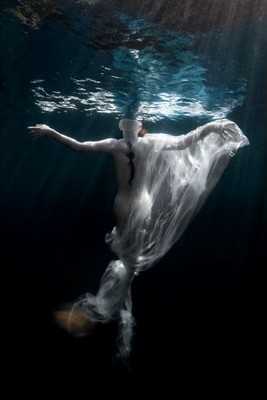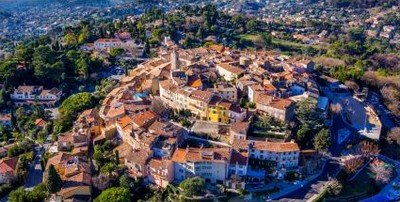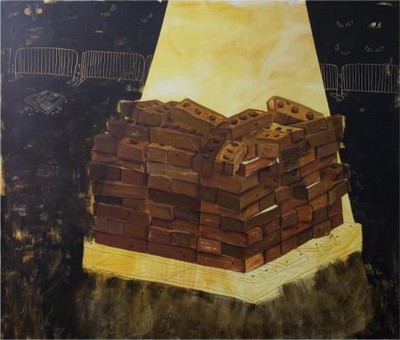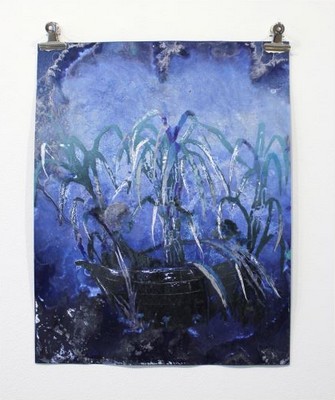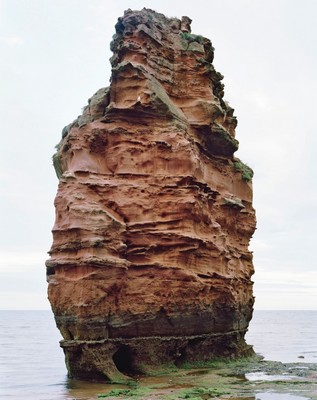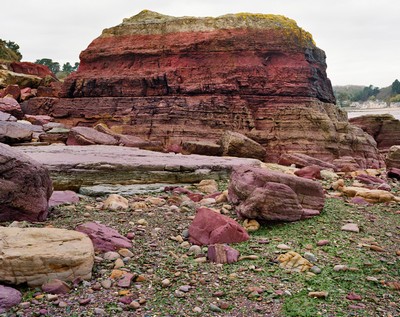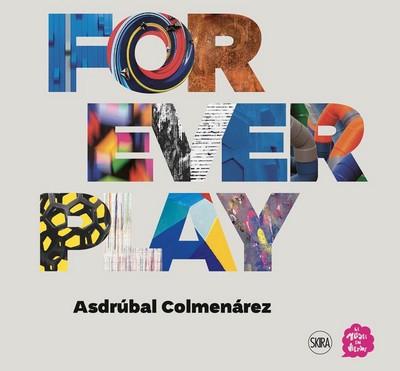Sharif Bey, Eddy Kamuanga,
Michael Ray Charles, Pat Phillips,
Kathia St Hilaire
Zidoun-Bossuyt Gallery, Luxembourg
Jusqu'au 8 mai 2021
Zidoun-Bossuyt Gallery présente une exposition de sculptures, tableaux et oeuvres sur papier de Sharif Bey, Eddy Kamuanga, Michael Ray Charles, Pat Phillips et Kathia St Hilaire.
SHARIF BEY
© Sharif Bey, courtesy Zidoun-Bossuyt Gallery
« J’ai été élevé dans un foyer anti-impérialiste – c’était la culture, » explique Sharif Bey, « une culture du questionnement, de la remise en question, du rejet des récits que les médias déversent sur nous. » Au cours des trente dernières années, Sharif Bey a canalisé cet élan dans sa pratique de l’argile.
Les sculptures de Sharif Bey font référence au patrimoine visuel d’Afrique et d’Océanie, ainsi qu’à la culture afro-américaine actuelle, en explorant l’importance des perles et des figurines traditionnelles à travers des réinterprétations contemporaines de ces formes. Il travaille essentiellement avec la céramique, un médium historiquement utilisé par les communautés pour créer à la fois des objets fonctionnels et des objets de culte. En sondant les propriétés symboliques et formelles de l’archétype des motifs, Bey questionne la manière dont la signification des icônes évolue selon les cultures et les périodes.
Sharif Bey ne recule pas devant les stéréotypes. Au contraire, il se réapproprie et recontextualise cette imagerie comme pour défier la culture dominante. Par exemple, dans les Protest Shields, l’artiste intègre des éléments rituels avec des couronnes de poings levés – autre symbole dont la signification n’a cessé d’évoluer, des mouvements ouvriers du début du XXème siècle, au mouvement du Black Power des années 1960 et 1970, jusqu’à aujourd’hui avec le mouvement des Black Lives Matter.
Sharif Bey (né en 1974, à Pittsburgh, PA, aux Etats-Unis) vit et travaille à Syracuse, NY, où en plus de sa pratique en atelier, il est maître de conférences en éducation artistique et en enseignement et leadership à la Faculté des Arts visuels et de la scène et à l’Institut pédagogique de l’université de Syracuse. Bey a obtenu sa licence des Beaux-arts en céramique à l’université Slippery Rock de Pennsylvanie, un master des Beaux-arts en art en atelier à l’université de Caroline du Nord et un doctorat en éducation artistique de Penn State University. Il a participé à de nombreuses bourses et résidences d’artiste pour affiner son art et ses œuvres sont présentes dans de nombreuses collections publiques dont : Le Carnegie Museum of Art, à Pittsburgh, PA ; le Smithsonian American Art Museum et la Renwick Gallery, à Washington DC ; le Columbus Museum of Art, OH ; et les Ambassades américaines de Khartoum, au Soudan ; de Kampala, en Ouganda ; et de Jakarta, en Indonésie. Une de ses prochaines expositions sera une exposition individuelle au Musée Everson de Syracuse, NY en 2021.
EDDY KAMUANGA
© Eddy Kamuanga, courtesy Zidoun-Bossuyt Gallery
Eddy Kamuanga Ilunga explore les bouleversements considérables qui se sont produits dans l’identité économique, politique et sociale de la RDC depuis le colonialisme. Pays de plus en plus mondialisé, on a le sentiment en RDC qu’une partie de sa population rejette son héritage, un conflit qui alimente l’oeuvre d'Eddy Kamuanga Ilunga. Ses compositions figuratives de grande taille possèdent une compréhension historique profonde, avec un jeu frappant et sophistiqué sur l’intensité des espaces mise en contraste avec le vide. Les personnages apathiques semblent pleurer la perte de leurs cultures traditionnelles, leurs tissus aux couleurs chatoyantes pendant mollement de leurs corps, leurs mains agrippées à des objets rituels dont les fonctions semblent de moins en moins perceptibles. Pour son dernier projet, Eddy Kamuanga s’appuie sur l’histoire du Royaume du Kongo pour révéler l’héritage de ses dirigeants et étudie l’impact que cela a eu sur la société congolaise contemporaine. Ces nouvelles oeuvres présentent des objets comme la porcelaine utilisée par les premiers commerçants portugais ainsi que la poterie, comme les Toby jugs (sorte de cruches), qui firent plus tard leur apparition sur les routes commerciales du Royaume du Kongo pour le commerce des esclaves. Dans ce corpus d’œuvres, Eddy Kamuanga rend hommage aux esclaves et aux ancêtres qui ont résisté à la traite d’êtres humains en présentant une image du paysage sociopolitique de la République démocratique du Congo.
Né en République démocratique du Congo en 1991, Eddy Kamuanga Ilunga a étudié la peinture à l’Académie des Beaux-arts de Kinshasa. Bien que le style figuratif formel strict datant presque du XIXème siècle qui est enseigné à l’Académie depuis sa création à l’époque coloniale permît à l’artiste de développer des compétences sophistiquées en peinture, ce dernier trouva en fin de compte son programme étouffant conceptuellement, et abandonna alors ses études en 2011. Bien qu’il y ait peu de choses en place pour soutenir cette décision, il a rapidement créé des liens avec d’autres artistes pour créer M’Pongo, un atelier collectif où un ensemble éclectique de jeunes artistes ont partagé des idées et exposé ensemble donnant naissance à leur propre scène pleine de vitalité, se nourrissant de la créativité extrêmement bouillonnante du Kinshasa actuel.
En 2017, l’oeuvre d'Eddy Kamuanga Ilunga a été intégrée à l’exposition African-Print Fashion Now! au Fowler Museum, de UCLA, en tournée au Memphis Brooks Museum of Art, de Memphis, Tennessee, et au Mint Museum, de Charlotte, Caroline du Nord. Ses travaux ont été exposés à l’international dans des institutions comme le Frist Art Museum, de Nashville, Tennessee, aux Etats-Unis ; la Kunsthaus, de Graz, en Autriche ; le Birmingham Museum & Art Gallery, de Birmingham, au Royaume-Uni ; la Saatchi Gallery et le Royal Academy of Arts, de Londres, au Royaume-Uni. Son œuvre est présente dans d’importantes collections privées et publiques, notamment : la collection privée Laurence Graff OBE ; la collection Zeitz du Musée Zeitz d’art contemporain d’Afrique, Le Cap, Afrique du Sud ; le Hood Museum of Art, Hanover, Etats-Unis ; la collection Pizzuti du Columbus Museum of Art, Etats-Unis ; la Fondation Norval, Le Cap, Afrique du Sud ; et la Scheryn Art Collection, Le Cap, Afrique du Sud.
PAT PHILLIPS
© Pat Phillips, courtesy Zidoun-Bossuyt Gallery
Les oeuvres de Pat Phillips évoquent le lien entre chaleur étouffante et agression, hostilité et proximité de l’« autre ». Tandis que les médias ont toujours représenté les images d’événements comme l’ouragan Katrina, le verdict de l’affaire Rodney King ou la simple sortie d’une chaussure Jordan, nous oublions souvent les nuances de ces dynamiques en lien avec les célèbres poudrières de notre climat politique et social. De ce fait, nos récits peuvent devenir quelque peu fantastiques.
Qu’elles prennent l’apparence de la complicité, de la peur, de l’ignorance ou du désespoir, ce sont les interactions subtiles entre non seulement les différents groupes sociaux, mais également au sein de nos propres communautés, qui mènent souvent à ces situations précaires.
Pat Phillips est né à Lakenheath, en Angleterre en 1987. Déménageant en Louisiane quand il était encore très jeune, il a passé ses premières années d’adolescence à peindre et photographier les wagons de marchandises dans une petite ville. Son travail a été présenté à la Biennale du Whitney Museum of American Art à New York. Il a eu notamment en expositions individuelles ROOTS (Antenna Gallery, Nouvelle-Orléans, LA), Told You Not to Bring That Ball (Masur Museum of Art, Monroe, LA) et SubSuperior (CatincaTabacaru Gallery (New York, NY). Pat Phillips a participé à des résidences au Vermont Studio Center et à la Skowhegan School of Painting & Sculpture. En 2017, il reçoit une bourse Joan Mitchell en peinture et sculpture. Son œuvre est visible, entre autres, dans les collections du Whitney Museum of American Art, à New York, NY ; au Block Museum of Art, Evanston, IL ; et au New Orleans Museum of Art, à la Nouvelle-Orléans, LA.
MICHAEL RAY CHARLES
© Michael Ray Charles, courtesy Zidoun-Bossuyt Gallery
Michael Ray Charles est un peintre américain contemporain. Son travail explore les stéréotypes historiques sur les afro-américains du Sud d’avant la guerre de Sécession, en s’appropriant les images du monde de la publicité et de la culture populaire afin d’exposer le racisme sous-jacent qui prévaut dans la culture contemporaine. Charles crée un vocabulaire mimétique des images culturelles, raciales et historiques pour subvertir ces thèmes et ausculter la survivance de caricatures qui continuent d’apparaître dans les médias populaires, comme Aunt Jemima ou Sambo. « Les stéréotypes ont évolué. J’essaie de me pencher sur les stéréotypes présents et passés dans le contexte de la société actuelle, » a déclaré l’artiste. Né à Lafayette, LA en 1967, il a obtenu sa licence des Beaux-arts à la McNeese State University et son master des Beaux-arts à l’université de Houston. Ses travaux ont été à la fois célébrés par la critique et la source de controverse et, en 2001, Charles a été le sujet d’un court documentaire Art:21. Il a été nommé professeur de peinture émérite Hugh Roy and Lillie Cranz Cullen en 2014 à l’Ecole d’art de l’université de Houston et il a exposé à l’international, notamment à l’Austin Museum of Art, la Knox Art Gallery et le Musée d’art moderne de New York.
KATHIA ST HILAIRE
© Kathia St. Hilaire, courtesy Zidoun-Bossuyt Gallery
Avec un langage pictural propre, Kathia St. Hilaire mélange de manière caractéristique des images de paysages marins caribéens « exoticisés » ou de réunions de famille avec des emballages de sucre ou de mèches, éléments racontant son identité haïtienne. « J’ai observé différents types de publicités et de matière brute qui joue un rôle important dans la diaspora noire, » déclare-t-elle. « Je pense tellement que la race se situe en surface et qu’il y a peu de compréhension de la culture. »
Les peintures de différentes couches de St. Hilaire sont un clin d’oeil à sa formation de premier cycle en gravure à l’Ecole de Design de Rhode Island. Avec une technique d’impression en relief par réduction, elle commence avec un grand dessin avant de le transférer sur une couche de linoléum, qu’elle découpe ensuite en petites sections et imprime sur toutes sortes de support, des produits de beauté à des pneus. Ces étapes sont répétées de nombreuses fois jusqu’à ce que la totalité du linoléum soit sculptée.
Kathia St. Hilaire (née en 1995) mêle des processus élaborés et des expériences personnelles dans sa pratique. A partir de la culture vaudou haïtienne et de son enfance dans une communauté caribéenne du sud de la Floride, le travail interdisciplinaire de St. Hilaire présente des couches multiples et évoque les étoffes de tapisserie traditionnelle. En utilisant des techniques d’impression en relief et des encres à base d’huile et métallisées sur des emballages de sucre et des boîtes de mèches, elle élève ces objets abandonnés au statut d’éléments éloquents, réfléchissant à la notion de produits de beauté comme articles de luxe.
« J’ai vécu toute ma vie dans une zone à prédominance caribéenne et afro-américaine dans le sud de la Floride. Mes expériences en grandissant avec les tensions entre les sous-cultures afro-américaine et caribéenne m’ont incité à observer comment mon histoire existe au sein de leur diaspora. Mon travail est guidé à la fois par ma réalité et ma relation à la diaspora haïtienne. Je reconnais à la fois mes liens et ma déconnexion du passé de mes ancêtres en prenant en compte les possibilités de l’espace urbain, de l’identification culturelle, des croyances innées et intuitives, ainsi qu’une recherche consciente de liens qui mettent au jour des continuités dissimulées par le courant dominant. Grâce à un processus interdisciplinaire, mon travail affirme et commémore des questions historiques et politiques controversées qui traitent des communautés à la fois marginalisées et privilégiées de la néo-diaspora. »
Kathia St. Hilaire (née en 1995, à Palm Beach, FL) a obtenu son master des Beaux-arts en peinture et gravure à l’Ecole des arts de Yale en 2020. Elle a passé sa licence des Beaux-arts en gravure à l’Ecole de Design de Rhode Island. Elle a reçu le Prix Jorge M. Perez 2019.
ZIDOUN-BOSSUYT GALLERY
6 rue Saint-Ulric, 2651 Luxembourg



